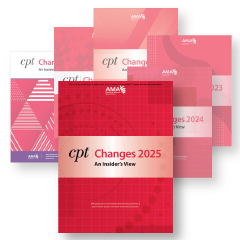by Find-A-Code™
Mar 12th, 2024
The 2024 edition of the American Medical Association's (AMA) CPT code set includes some significant changes, among them being some 349 editorial changes. The new code set went into effect on January 1 of this year. Interestingly, the code set also includes consumer-friendly terms that could ultimately help billers and coders.
Note that AMA worked with the Centers for Medicare and Medicaid Services (CMS) and the CPT Editorial Panel to help make the codes more understandable to consumers. Their actions are aimed squarely at patients and their caregivers, but billers and coders could still benefit from the simpler to understand terms.
Patients Want to Understand
As a medical coder or biller, perhaps you wonder why the AMA and its partners went to such great lengths to introduce consumer-friendly terms in its descriptors. The answer lies in the concept of outcome-based healthcare. In an outcome-based scenario, patients want to understand what they and their insurance companies are being billed for.
For generations, our healthcare system and subsequent CPT codes were built on a fee-for-service model. But about the same time that Congress was debating the validity of the Affordable Care Act (ACA), there was also a push by CMS to move away from the traditional model in favor of outcome-based care.
Outcome-based care has been a long time coming. It seems to finally be emerging the way lawmakers intended a decade ago. The most important thing to note as it relates to this discussion is the fact that outcome-based care directly involves a patient and their medical decisions.
If patients are to be active members of the decision-making process, they need to understand what members of the healthcare team are talking about. Therefore, they need to be able to look at medical bills and easily understand what they are being billed for. That is the whole point of the consumer-friendly terminology now attached to CPT code descriptors.
An Example of Simpler Terms
It should be noted that the consumer-friendly terms have been published only in Spanish for now. According to the AMA, the terms can help some forty-one million Spanish speaking patients more "actively engage in their own care." There are third parties now offering English translations. Here is an example:
The standard descriptor for code Q4254 is, "Novafix dl, per square centimeter". The consumer-friendly descriptor explains it as "Skin replacement, Novafix dl". Theoretically, the new descriptor should be easier for a consumer to understand.
How It Helps Coders and Billers
Although the consumer-friendly terms are squarely aimed at consumers, they could help billers and coders by helping them think in simpler terms. Billers and coders need to understand complex medical terminology to do what they do. However, they might not necessarily always think in those terms. Consumer-friendly language might help them do a better job when they are struggling with technical terms with which they are not familiar.
Think of it as similar to an automotive service writer. Service writers make use of complex terms for official paperwork and documentation purposes. But they do not necessarily think in those terms when trying to wrap their brains around the particular service a car requires. They are more likely to think in more common terms for their own purposes.
It is possible that medical coders and billers will benefit from the new consumer-friendly terms in much the same way. They know and utilize all the correct terminology as they do what they do, but the simpler terms could help them better wrap their brains around what it is they are coding. Time will tell if such is the case.


 Quick, Current, Complete - www.findacode.com
Quick, Current, Complete - www.findacode.com